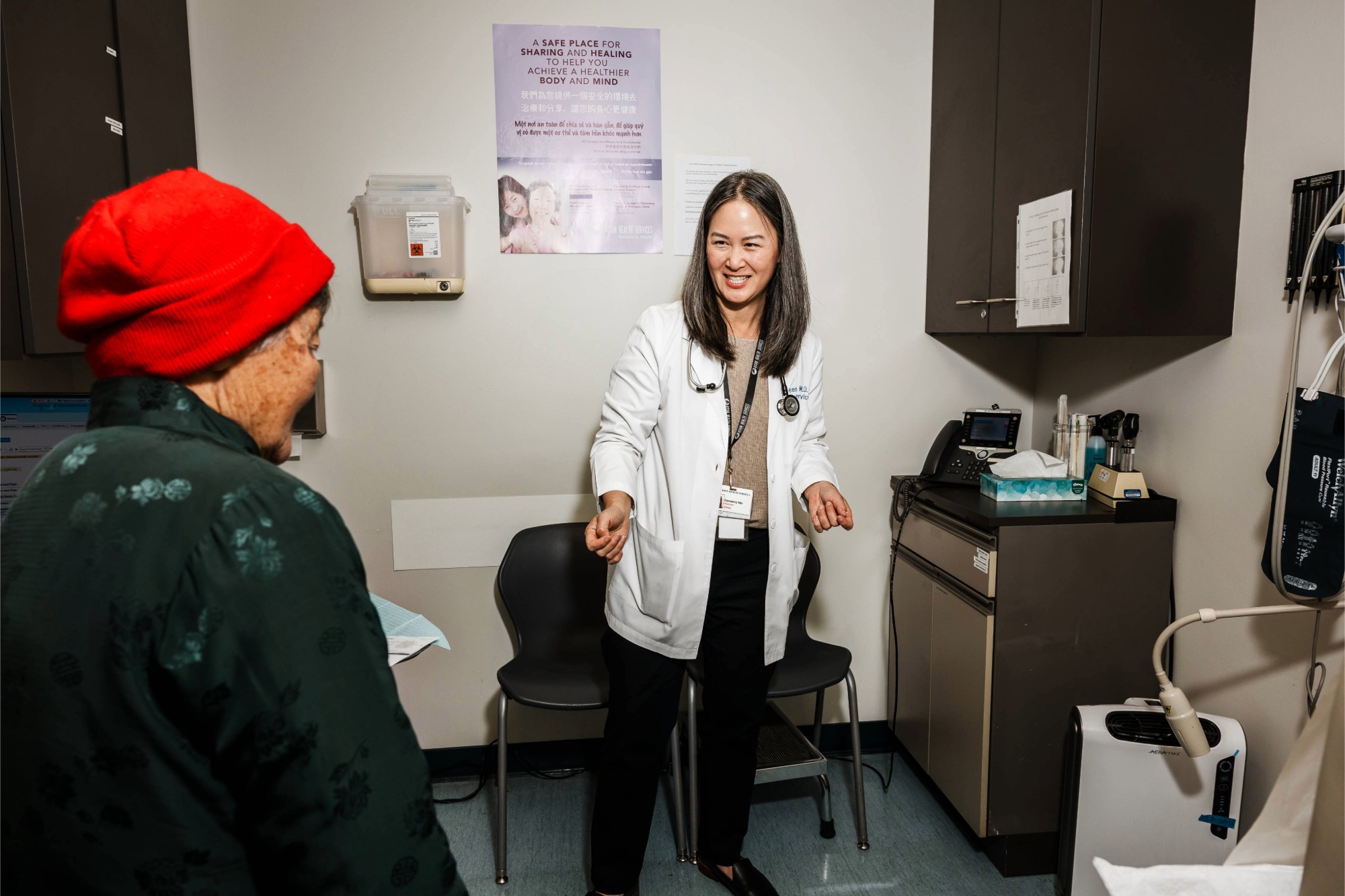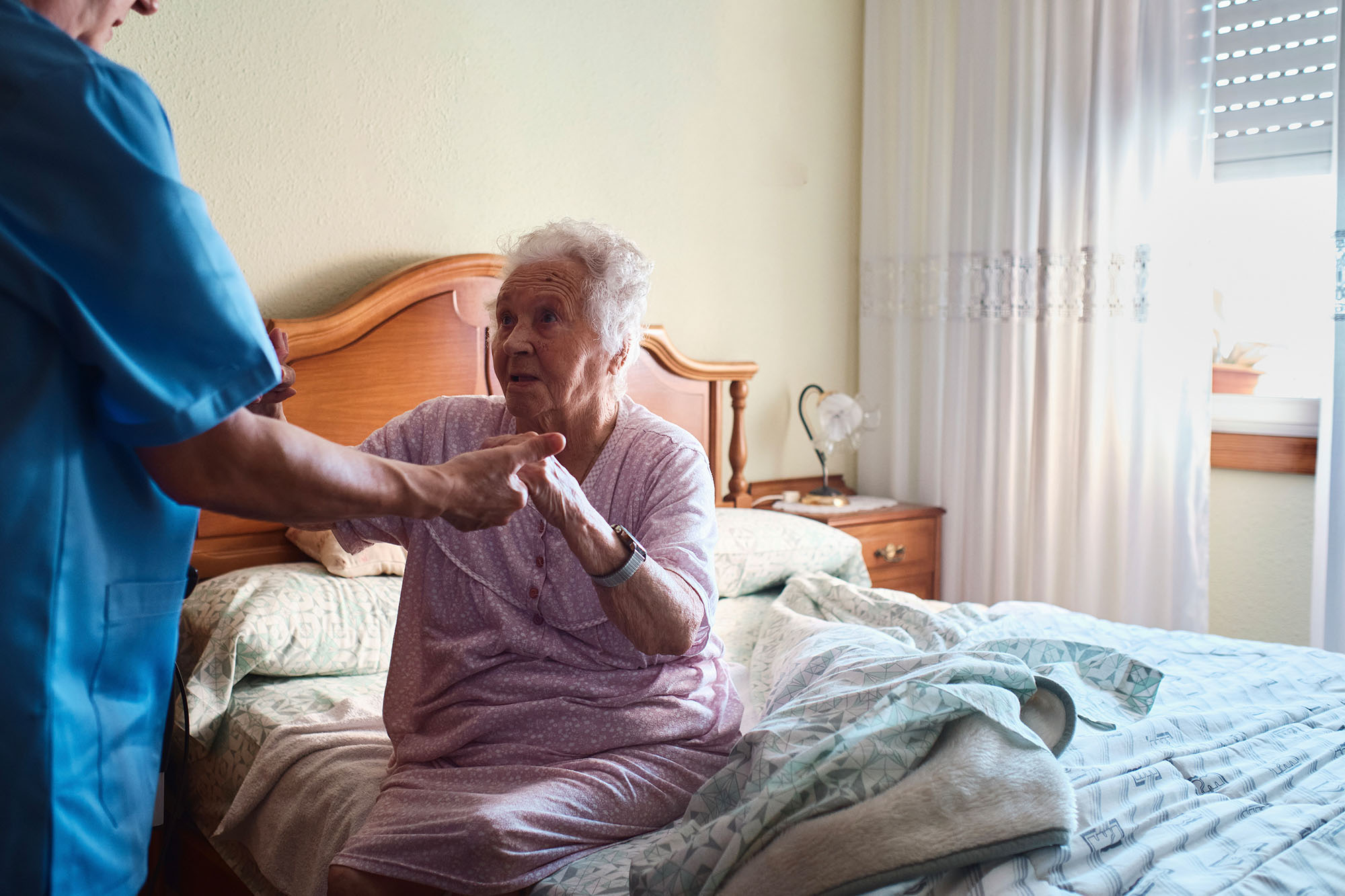View the Report
Jump to All Downloads & LinksAbout the Series
This guide is part of the series Resources to Support Palliative Care in Public Hospitals, which includes information and tools to help leaders of palliative care programs at public health care systems to sustain and expand inpatient and outpatient services that meet the needs of people with serious illnesses.
Leaders of public hospital outpatient palliative care (OPPC) services often need to make the case to health system clinical and administrative leaders to secure resources needed to sustain, improve, or expand the palliative care service. The materials provided here review useful tactics and tools for making the case and for keeping OPPC on the radar of leaders who make resource allocation decisions.
Preparing a Request for Support
Requesting Support for Outpatient Palliative Care in Public Hospitals: Topics and Tactics (PDF) covers approaches and topics commonly included in support requests. Although the processes and requirements vary across institutions, this document will orient you to what might be expected and give you ideas for what to cover in your own written or oral support requests. You can use the companion Support Request Template (zip) as a starting point for creating slides to accompany a verbal presentation, and the Clinic Capacity Calculator (zip) to estimate volume and staffing needs for a half-day clinic.
Useful Resources
You can incorporate the information, figures, and references in this section into your written or verbal support requests. Some materials can be shared with executives to educate them on palliative care principles, best practices, and outcomes.
- Resources Available from the Center to Advance Palliative Care (PDF) is a list of downloadable resources available from CAPC to help make the case for OPPC services. Many are freely available to all users, but for some, access is limited to CAPC members. Materials include issue briefs, infographics, slide sets, videos, and toolkits that guide OPPC leaders in explaining the case, as well as brief documents that can be shared with executives.
- Accelerating Change: Community-Based Palliative Care in Public Hospitals describes a multiyear CHCF initiative that supported the design and implementation of several palliative care clinics in California public hospitals. The document includes details on staffing, patient characteristics, clinic volumes, and reflections of the palliative care leaders who established or expanded outpatient services.
- Value Snapshot: Palliative Care Clinics is a two-page summary of findings from several peer-reviewed publications that show that outpatient palliative care decreases symptoms, improves patient satisfaction, and reduces hospital admissions, emergency department visits, and inpatient deaths. This brief document is suitable for distribution to administrative and clinical leaders.
- Estimating the Need for Community-Based Palliative Care in a Public Health System, a poster presentation made at the Center to Advance Palliative Care annual meeting in 2016, summarizes an analysis conducted at Zuckerberg San Francisco General Hospital that demonstrated the need for outpatient palliative care. The authors conducted a related analysis, “Making the Case: Is Outpatient Palliative Care for Oncology Patients Feasible Within the Safety Net?,” presented at the 2015 American Academy of Hospice and Palliative Medicine Annual Assembly, which showed a strong business case for an OPPC clinic for cancer patients.
- References for Making the Case for, and Evaluating Financial Impact of, Outpatient/Clinic Palliative Care (PDF) is a list of selected peer-reviewed studies that describe the positive impacts of OPPC that you may wish to reference in your support request. The document includes notes on key findings from each publication, such as patient characteristics, OPPC service characteristics, and a range of outcomes. One paper, Staffing in California Public Hospital Palliative Care Clinics: A Report from the California Health Care Foundation Palliative Care in Public Hospitals Learning Community, describes 10 outpatient palliative care services in California public hospitals.
- Additional Slides That Might Be Useful (zip) features slides that define palliative care, data from a 2019 CHCF survey assessing Californians’ attitudes toward and knowledge of palliative care, and slides describing financial and utilization outcomes from published studies. It might be useful to incorporate these slides into your materials, depending on your audience, focus, and goals.
Being Ready: Activities to Have in Place Before Asking for Support
Activities to Have in Place Before Asking for Support (PDF) includes suggestions on what to do before asking for resources for your outpatient palliative care program, and after you get them.
Advice and Observations from Public Hospital Palliative Care Leaders
Many of California’s public hospitals have OPPC services. Two of the public hospital palliative care leaders who have successfully secured resources to launch, sustain, expand, or improve these services have generously shared advice for others who will be doing similar work in the coming years.
Linda Bulman
Advice and Observations from Linda Bulman, BSPT, PA-C, Program Manager of Palliative Care Services, Alameda Health System

- Find a system leader interested in your cause. Arrange a meeting with financial and executive leadership. Present much of the data collected by others (available in CHCF resources) on the cost savings of a palliative care program.
- Utilize what is already out there; do not reinvent the wheel.
- Secure grant funding to sweeten the deal.
- Lock in sustainability promises made by leadership.
- Provide data on readmissions for patients with serious illness.
Katherine Yu
Advice and Observations from Katherine Yu, MD, Director of Palliative Care, Olive View-UCLA Medical Center; Clinical Professor of Medicine, David Geffen School of Medicine at UCLA

- Don’t start an outpatient service until your inpatient service has achieved stability, including viable and effective workflows — otherwise, it is easy to get overextended. Volume, not quality of care, tends to drive perception of clinic value. Start slowly with one or two [clinic] sessions at most so you can iron out the issues that always come up with a new service.
- Decide in advance if you will share staff across the inpatient service and PC clinic. It can be a good idea for staff to rotate to both services, to ensure good workflows and to prevent tension due to variable workloads.
- Consider having the palliative care team social worker introduce advance care planning (ACP) information and initiate the conversation — this is often less threatening and less anxiety provoking for patients than having a provider first introduce the concept.
- Pay attention to team well-being, in big and small ways. For example, we celebrate team members’ birthdays, even if it just means spending the time eating our own packed lunches together followed by a cake or dessert and ritual to mark the occasion for the team member.
- Provide palliative talks on ACP topics for all health system social workers and interpreters and similar educational sessions for other staff members (new employee orientation for nursing, etc.). Quarterly, offer reflection rounds for all staff who wish to attend for debriefing and processing emotionally heavy cases (similar to Schwartz Rounds).
Authors & Contributors

J. Brian Cassel
J. Brian Cassel, PhD, is a health services researcher at Virginia Commonwealth University School of Medicine who focuses on financial outcomes of palliative care. He also assists palliative care teams in program design, implementation, and evaluation.

Kathleen Kerr
Kathleen Kerr is a partner in the consulting firm Transforming Care Partners. Her work is focused on promoting the development of sustainable, high-quality palliative care programs, with particular emphasis on payer-provider partnerships and supporting programs that serve Medicaid enrollees.





